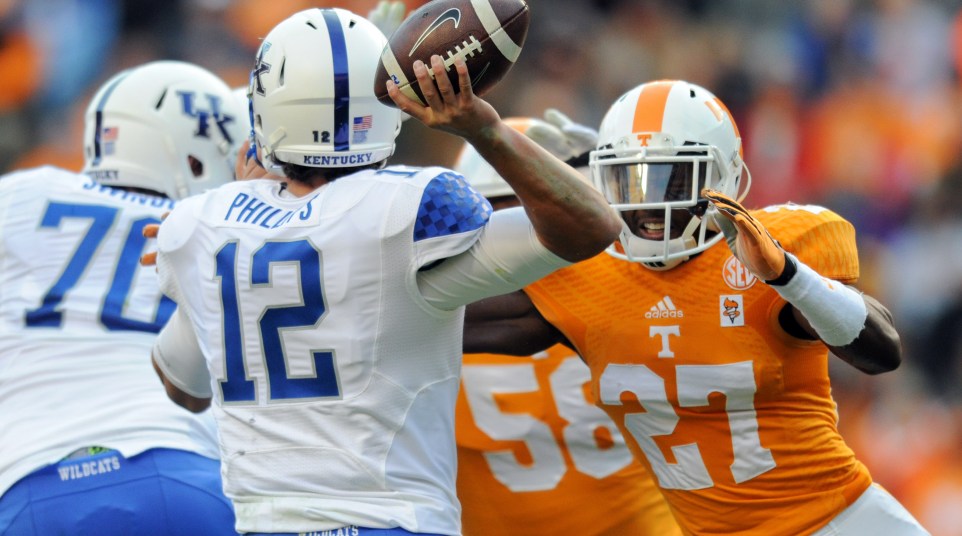Reliving the rise and fall of the 'Battle of the Barrel'
Let’s play a game called “Guess the Rivalry.” I’ll give you some clues, and you tell me which two teams I’m referring to:
- These two teams have met 110 times in their respective histories
- They share in the third-oldest rivalry in SEC history
- The two teams hail from different states, but their campuses are only 173 miles apart
- The team leading the series has the third-most wins of any team in a series spanning at least 110 games
- Each program claims a coach with at least 170 career victories its program’s history
Give up? The answer is Kentucky-Tennessee, a rivalry few SEC fans ever regard as significant, or even as a rivalry at all. That’s due in large part to Kentucky’s inadequacy on the football field through the years, especially in the last 30 years, a span in which the Wildcats have registered just one win over the Vols.
But what many fans don’t realize is that the Kentucky-Tennessee rivalry was once one of the most prominent rivalries in the nation, and for the fans of both teams it’s still one of the most highly anticipated games of each season.
The two teams now play for nothing more than bragging rights, which can still mean a lot in this Internet age when a 173-mile gap can be closed in an instant, making cross-state trash talk much more invigorating.
But for more than 70 years, the two teams used to literally play for beer. Well, they played for a barrel of beer, one of the most unique trophies ever tied to a rivalry game.
The barrel was introduced after the 1925 showdown between the Cats and the Vols by a group of Kentucky students looking to signify UK’s superiority to its rival. It was rolled onto the field after UK defeated Tennessee for the second year in a row, and painted over the blue-colored exterior were the words “Ice Water,” a flat-out (albeit necessary) lie during the Prohibition era.
From that point on, the barrel became immortalized as the trophy between the two rivals. One side was left blue, and the other was painted orange to represent Tennessee. It didn’t always read “Ice Water,” but it always represented a massive container of beer.
In its 77-year history, the barrel played a role in quite a few devious plans involving students from both schools, and even a third-party in the SEC. In 1953 the barrel was stolen by Tennessee students even though Kentucky had won that year’s game, entitling UK to store the barrel on its campus for a year. In an effort to retaliate and earn its barrel back, UK students dog-napped Smokey, Tennessee’s longtime mascot, and eventually the two sides traded back what was rightfully theirs.
A few years later in 1960, students from Vanderbilt University stole the barrel off Kentucky’s campus (you’d think the Wildcats would have increased security after 1953) in an effort to rally support from the Tennessee fan base for Vandy’s upcoming basketball game with Adolph Rupp and the Wildcats. Kentucky trounced the Commodores on the court and won back its barrel for a second time in a matter of months.
Eventually, however, the barrel had to be retied. When two Kentucky football players died in an alcohol-induced car crash in the week leading up to the 1998 showdown between the Wildcats and Volunteers, UK athletics director C.M. Newton deemed an alcohol container, especially one of that size, to be an inappropriate trophy considering the circumstances. It was not presented after that game in 1998, and before the 1999 installment in the rivalry the two sides agreed to retire the barrel.
The barrel’s current whereabouts are unknown by the general public, but it is not displayed by Tennessee, the last team to win the barrel before its retirement. But the rivalry was less about the barrel itself and more about what the barrel, or any trophy in an ongoing rivalry, represents — mutual hatred on the football field. That hatred still lives on today, allowing the barrel to do so as well.

